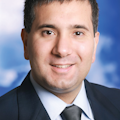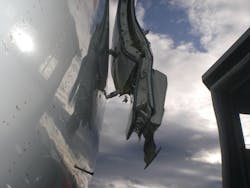The Need For Comprehensive Safety Risk Management
Aircraft ground damage is a significant financial, operational and safety issue, particularly in view of the airline industry’s thin profit margin. The Flight Safety Foundation several years ago estimated that “ramp accidents cost airlines worldwide at least $10 billion a year. These accidents affect airport operations, result in personnel injuries and damage aircraft, facilities and ground-support equipment.”
The Foundation also estimated that 27,000 ramp accidents and incidents — one per 1,000 departures — occur worldwide annually. Ground damage is associated with safety risks that cannot be underestimated. About 243,000 people are injured each year in ground occurrence accidents and incidents; the injury rate is 9 per 1,000 departures.
CURRENT INITIATIVES
Some improvements in ground safety performance have been attempted by the global airline industry over the past few years by consolidating handling practices to meet best industry standards. A number of programs and initiatives have taken shape:
- The International Air Transport Association (IATA) has been promoting standard operating procedures with the IATA Safety Audit for Ground Operations (ISAGO) audit program and the IATA Ground Operations Manual (IGOM).
- The Flight Safety Foundation has been promoting best practices with the Ground Accident Prevention (GAP) program.
- In addition the Association of European Airlines has been lobbying for a revision of the IATA Standard Ground Handling Agreement (SGHA) in order to increase the loose liability limits imposed on ground service providers.
- The Australasian Aviation Ground Safety Council (AAGSC) has also promoted safety awareness and safety programs over the last 30 years in the South Pacific rim.
The initiatives that have been implemented certainly have their merits. However, the so far almost exclusive focus on the standardization of procedures is of limited effectiveness unless proactive safety management solutions such as occurrence reporting and risk management are also implemented to find the root causes of damage incidents and develop even more targeted measures. It should be noted however that IATA has been collecting ground damage data for benchmarking by developing its Ground Damage Database. This is certainly a proactive development stance being promoted in the industry.
RISK MANAGEMENT
Take a look, for example, at safety performance in the air operations of the aviation business rather than airside operations. Air operations have seen the development of structured Safety Management Systems built on risk management and SMS has established a strong culture of comprehensive occurrence reporting, compliance monitoring, human factors and crew resource management training, accident and incident investigations and Line Operations Safety Audits (LOSA). All these measures have contributed to make flying a remarkably safe experience.
In the ground operations industry, on the other hand, there is considerable room for improvement with regard to the introduction of modern day proactive safety management tools and methods, as tested and validated in the flight operations side of the business. The focus of current industry ground safety programs on best industry practices is necessary and beneficial, but it needs to be supported by hard evidence and lessons learned to target actual causes of ground incidents and accidents.
Many of the most typical and frequent causes of ground safety occurrences are often beyond the scope of current standardization programs. It is in fact the expert opinion of airline ground managers that ground safety occurrences are caused by a variety of factors including the following:
- The low sophistication of an average ground handling company’s management system.
- The infrastructural constraints at airports.
- The airline-enforced policies of fast turnarounds.
- The insufficient training of personnel.
- The lack of human factors awareness.
- The high turnover rate of personnel and, thus, the low motivation in the performance of duties.
“Another factor is the transition of the responsibility of ground handling moving from the airline to purely ground handling companies," says Ivar Busk, manager of insurance at SAS Scandinavian Airlines and former head of airside safety at SAS. "Ground staff seem to have lost status by not working for an airline. The problem is that when evidence is requested by chief financial officers – as well as other top managers not dealing directly with operational issues - in order to substantiate these expert opinions, airline ground managers have limited evidence to substantiate their claims.”
With the development of hazard reporting and risk management systems (or their refining where these are already in place), airline ground managers can have a factual basis to justify their requests of budget to implement safety performance improvement programs and are enabled to monitor safety performance over time and against industry peers, if standard systems are used and the participation to data sharing initiatives is ensured.
ADVANTAGES AND BENEFITS
In order to understand the advantages and benefits to the airline ground operations industry of occurrence reporting and risk management systems it is important to clarify what such systems are.
The International Civil Aviation Organization (ICAO) defines a hazard as a “condition or object with the potential to cause injuries to personnel, damage to equipment or structures, loss of material, or reduction of ability to perform a prescribed function.”
The consequences of a hazard are the manifestations of the damaging potential of the given hazard. Reportable safety occurrences are those when the damaging potential of a hazard is fully or partially released by causing harm to people and/or equipment. In advanced hazard reporting and risk management systems occurrences are reported even when they are near misses, in other words when the damaging potential was about to be released but the situation went back to normal with or without corrective action taken.
“A number of 'near misses' indicates that a real case is waiting to happen if the near misses are not taken seriously into account and corrective action is initiated” Busk says.
Let’s go through an operational example.
In a ground operations environment, a typical hazard is a ground service vehicle operated around an aircraft, since it has the potential to cause damage to the aircraft it services. A possible consequence of operating a ground service vehicle around an aircraft is the collision of the vehicle with the aircraft. Ideally in a hazard reporting and risk management system each and every instance when an aircraft is hit – or close to be hit - by a ground service vehicle is to be reported.
“Unfortunately, up 20 percent of all damages is 'unreported' when they are found on next arrival/departure or later," Busk says. "The reason could be management culture or typical behavior as well as a matter of company culture. This is a big threat to the safety awareness.”
ICAO further defines risk as “the assessment, expressed in terms of predicted probability and severity, of the consequences of a hazard, taking as reference the worst foreseeable situation” and risk management as “the assessment and mitigation of the risks of the consequences of hazards that threaten the capabilities of an organization to a level as low as reasonably practicable."
Risk management. in other words, is the whole set of activities developed to better assess how often and how badly the consequences of a hazard are released and to bring down risk levels by developing mitigation actions.
In our operational example, risk management implies assessing how often and with what consequences a vehicle is likely to hit an aircraft and, based on this information collected in a database, developing policies and procedures which are adequate to ensure that the frequency and/or the severity of a vehicle hitting an aircraft is reduced by, for example, better designing and planning the operations and by training personnel to adhere to safe practices.
“A good preventive measure has historically been the positioning of cones in front of engines and wing tips, which has decreased the number of damage events on this objects significantly,” Busk says.
The availability of in-house safety performance data allows the development of corrective and preventive actions which are operator-specific; this practice is in line with the latest requirements for performance-based safety management.
Intuitively, human beings tend to make decisions so as to reduce the damaging potential of what they do. Risk management as a business practice differs from what individuals already do intuitively because it is a structured and documented process.
Abundant guidance on how to plan and implement a hazard reporting and risk management system can be found in ICAO’s Safety Management Manual, other risk management standards exist, such as ISO 31000 and the Australia New Zealand Standard 4360:2004. It should be noted that ICAO’s material is more suitable to an aviation service provider, as it was developed with the aviation industry in mind and it is the reference of new regulations on safety management systems, of which risk management is a significant, if not the main, component.
SMS REQUIREMENTS
In November 2013, ICAO released Annex 19 on Safety Management Systems, and aviation safety regulators worldwide are demanding an ever wider implementation of safety management systems by aviation service providers. Such requirements are already there for heavily regulated aviation service providers such as air operators, airports and maintenance organisations.
Ground operations are notoriously the least regulated segment of the aviation business and they have long relied on self-regulation and the pressure of airlines of which ground service providers are often a spin-off from the old days of highly vertically integrated state-owned international airlines.
Although in the SMS framework aviation service providers are requested to ensure that third parties under contract meet certain quality and safety standards, it is not very likely, at least in the short term, that ground service providers will be directly regulated for SMS implementation.
It is nevertheless important that the ground operations industry continues its self-regulation efforts and conform to SMS requirements. With this regard the ISAGO standard is leading the way, one of the main changes to ISAGO standard and recommended practices with the release of the third edition of the ISAGO Standards Manual, effective from January 2014, has been in fact the upgrade of the requirement for risk management from recommended practice to standard. This means that now an organisation audited against ISAGO and found not compliant in relation to risk management implementation records no longer an observation but a an actual finding requiring corrective action.
“Airline ground managers may find it frustrating to deal with the additional complexity and associated increased workload brought in by a new compliance requirement such as ISAGO’s risk management standard," Busk adds. "What should motivate and keep them focused are the advantages that airline ground managers can obtain in their organizations with the support of risk management in terms of better controllability and efficiency of ground operations and less cost.”
About the author: Mario Pierobon holds a Master’s Degree in Air Transport Management from City University London and works in business development and project support at Great Circle Services in Lucerne, Switzerland. Mario regularly writes about aviation safety and his main professional and research interests are in the areas of airside safety.
About the Author

Mario Pierobon
Dr. Mario Pierobon provides solutions in the areas of documentation, training and consulting to organizations operating in safety-sensitive industries. He has conducted a doctoral research project investigating aircraft ground handling safety. He may be reached at [email protected].
